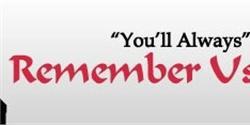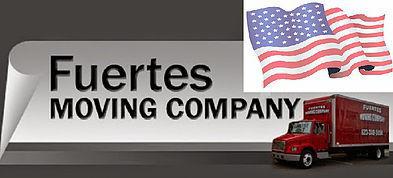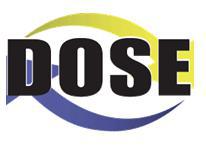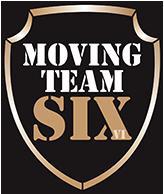Arizona Movers Top Rated
(888) 787-7813138 Movers in Arizona
Page 1/10
Find The Best Movers In Arizona
Moving to Arizona means that you need the best Arizona movers, plain and simple. And to find the best Arizona priced movers, you've come to the right place. Be an informed consumer. Read local moving company reviews as well as interstate Arizona moving reviews. If you need a cross country movers AZ, we've listed Arizona interstate movers. You can use this to choose the top state to state moving company. We can help you find moving tips and discount relocation rates. Get a free moving quote and Arizona movers cost estimate today from Moving Authority. We have made ourselves the officer in finding the best Arizona moving companies. See which companies have professional service so you can see their rating. Then, create a schedule to work with.
Looking for movers in Phoenix Arizona? Movers Tucson Arizona? Perhaps you need to move from another state to Arizona. Whatever the situation may be, Moving Authority can help. With a 2017 list of top movers in Arizona, we are able to connect you to a mover that suits your needs. Thanks the the great support of our loyal customers, we have done just that. It makes us proud to announce that we are always here to help you move.
Confused between Arizona local movers, self-service movers, and Arizona long distance movers? You've come to the right place. When you're looking to move your furniture, read Arizona moving company reviews. This way, you'll have a better understanding of a moving cost estimate. Also, look into the best car transport in Arizona to lighten your moving stress. Get free moving estimates. Find your American moving company and movers Arizona here at Moving Authority.
Identifying the Top Scams of ROGUE MOVERS—Don’t Let Them Happen to You!
- Make sure the moving company owns their own team of trucks. Otherwise, you’re paying a broker more than necessary to act as a middleman in your move.
- Get everything in writing. If you don’t understand a charge, ask for an explanation. If none is given, refused to sign the contract.
- Make sure your movers in AZ have a tariff. This is a legal document required for all moving companies to have at all times. The tariff states the company’s service moving, pricing, terms, and conditions.
- Careful to verify this company’s status with the FMCSA and USDOT. If they are not fully licensed, then you are essentially moving items in their hands for the taking.
3 Things Everyone Wants to Know About Tipping Movers (But No One Wants to Ask)
- Do I have to tip my AZ movers? It is by no means required, but very much appreciated for a job well done.
- Is there a set amount that I should tip? It’s up to you, based on the satisfaction you have with the movers and how well you were treated. But, it’s most basic suggestion for a three-hour residential move is 5% to 10% of the total moving cost.
- But moving already costs too much! Is there a cheaper way to show gratitude? Yes, this cost can come as a surprise. If you have already created a budget, there might not be room in it for this additional expense. If you can't put a little extra cash in your movers' pockets, don't worry. A great gesture is to provide them lunch and refreshments.
4 Must-See Natural Wonders of Arizona
- Upper and Lower Antelope Canyon
- Monument Valley
- Wupatki National Monument
- Havasu Falls
Leaving the Nest: The Art of Moving Out On Your Own
- First, ask yourself where you’re going. There are several reasons that young people move out of their parents’ house. These include going to university, beginning careers, or starting life with a partner.
- Once you have an idea of how far you’re going, you can plan how much it will cost you for moving services. Look at your bank account and draft a budget for how much you’re realistically able to spend on your move.
- You might not have too much stuff since you’re starting out. Hiring a professional moving company will be affordable.
- Why is hiring movers a good idea, even if for one young person? Movers understand every part of the moving process. You’ll be in the best hands when it comes to navigating your move with precision.
Movers By City in Arizona
Do you know?

- A moving company, removalist, or van line are all companies that help people as well as other businesses to move their goods from one place to another. With many inclusive services for relocation like packing, loading, moving, unloading, unpacking and arranging of items can all be taken care of for you. Some services may include cleaning the place and have warehousing facilities.
- According to the U.S. Census Bureau, 40 million United States citizens have moved annually over the last decade. Of those people who have moved in the United States, 84.5% of them have moved within their own state, 12.5% have moved to another state, and 2.3% have moved to another country.
- In the United States and Canada, the cost for long-distance moves is generally determined by a few factors. The first is the weight of the items to be moved and the distance it will go. Cost is also based on how quickly the items are to be moved, as well as the time of the year or month which the move occurs. In the United Kingdom and Australia, it's quite different. They base price on the volume of the items as opposed to their weight. Keep in mind some movers may offer flat rate pricing.
- Many people are familiar with this type of moving, using truck rental services, or borrowing similar hardware, is known as DIY moving. Whoever is renting a truck or trailer large enough to carry their household goods may obtain moving equipment if necessary. Equipment may be items such as dollies, furniture pads, and cargo belts to protect furniture and to ease the moving process.
- As most people have experienced, moving does involve having the appropriate materials. Some materials you might find at home or may be more resourceful to save money while others may choose to pay for everything. Either way materials such as boxes, paper, tape, and bubble wrap with which to pack box-able and/or protect fragile household goods. It is also used to consolidate the carrying and stacking on moving day. Self-service moving companies offer another viable option. It involves the person moving buying a space on one or more trailers or shipping containers. These containers are then professionally driven to the new location.
- There many reasons for moving, each one with a unique and specific reason as to why. Relocation services, employee relocation, or workforce mobility can create a range of processes. This process of transferring employees, their families, and/or entire departments of a business to a new location can be difficult. Like some types of employee benefits, these matters are dealt with by human resources specialists within a corporation.















